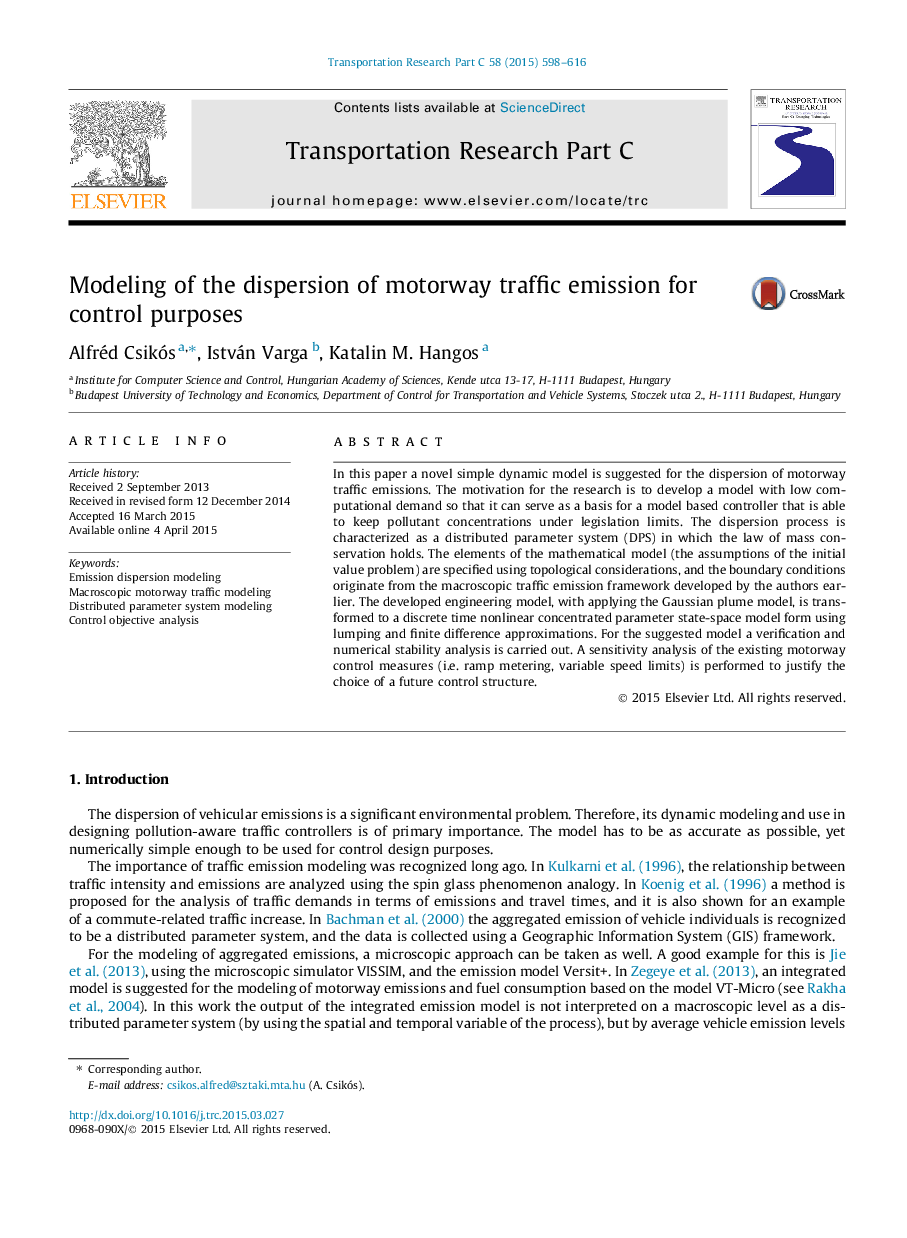| Article ID | Journal | Published Year | Pages | File Type |
|---|---|---|---|---|
| 524942 | Transportation Research Part C: Emerging Technologies | 2015 | 19 Pages |
•A simple dynamic model is suggested for the dispersion of motorway traffic emissions.•The process is characterized as a distributed parameter system.•A simplified form of the Gaussian plume model is used for pollution decay modeling.•Verification, numerical and sensitivity analyses are carried out for the model.•Control objectives are stated for the existing motorway control measures.
In this paper a novel simple dynamic model is suggested for the dispersion of motorway traffic emissions. The motivation for the research is to develop a model with low computational demand so that it can serve as a basis for a model based controller that is able to keep pollutant concentrations under legislation limits. The dispersion process is characterized as a distributed parameter system (DPS) in which the law of mass conservation holds. The elements of the mathematical model (the assumptions of the initial value problem) are specified using topological considerations, and the boundary conditions originate from the macroscopic traffic emission framework developed by the authors earlier. The developed engineering model, with applying the Gaussian plume model, is transformed to a discrete time nonlinear concentrated parameter state-space model form using lumping and finite difference approximations. For the suggested model a verification and numerical stability analysis is carried out. A sensitivity analysis of the existing motorway control measures (i.e. ramp metering, variable speed limits) is performed to justify the choice of a future control structure.
